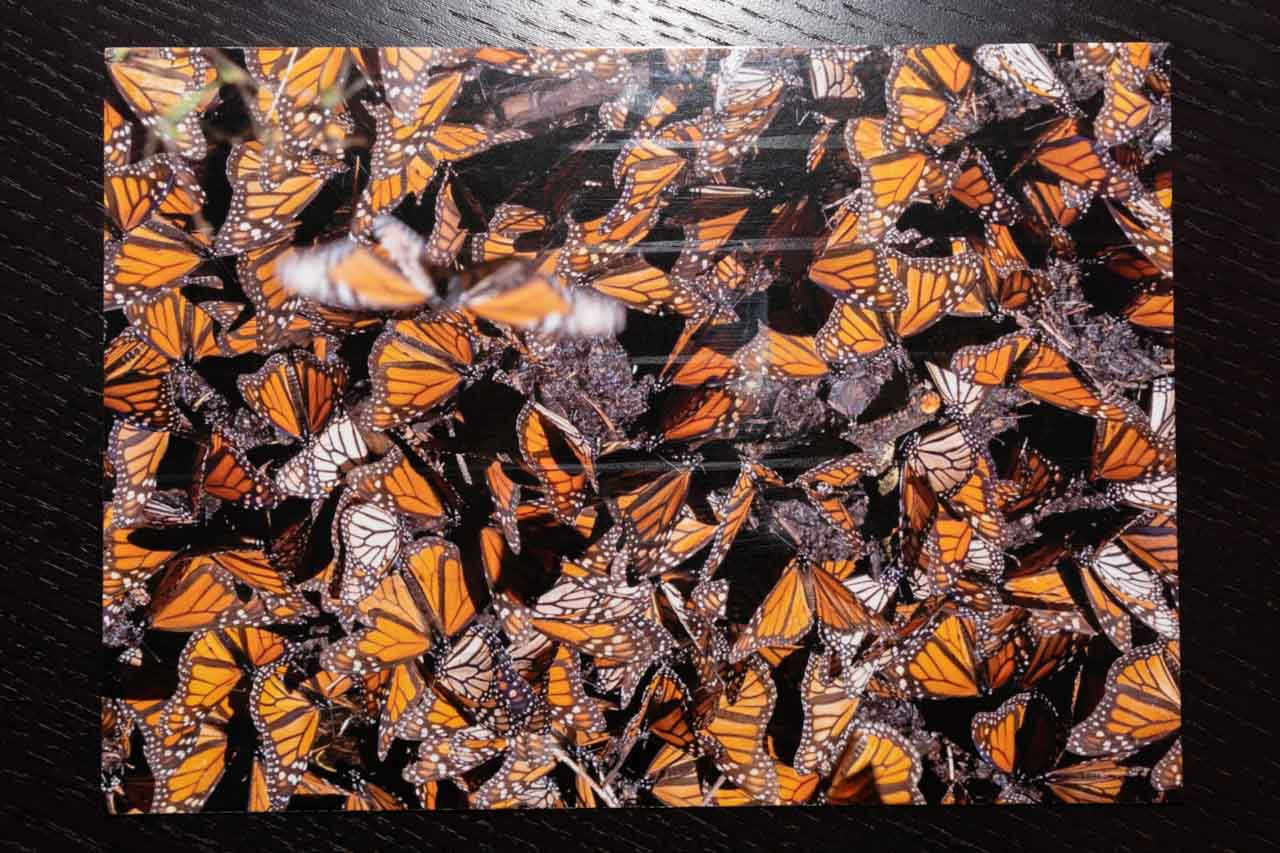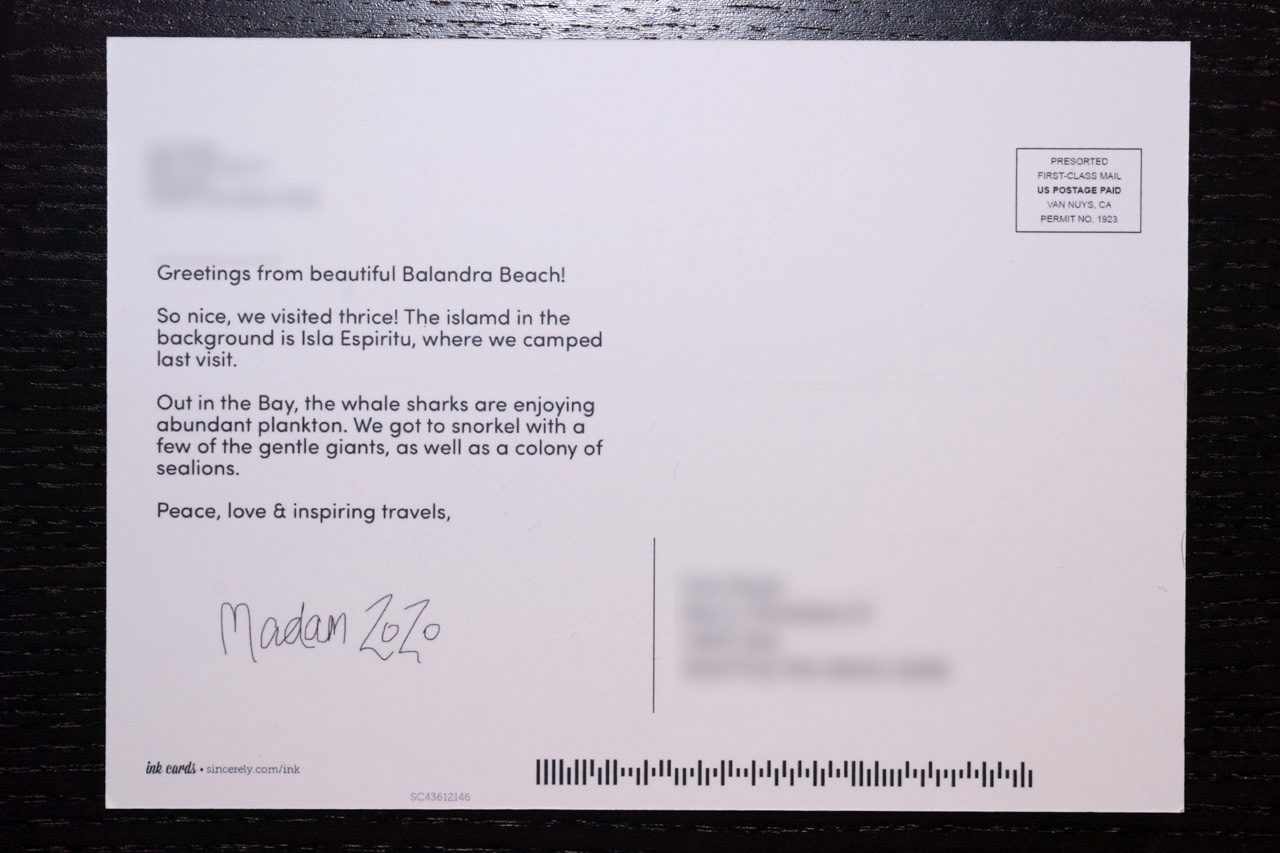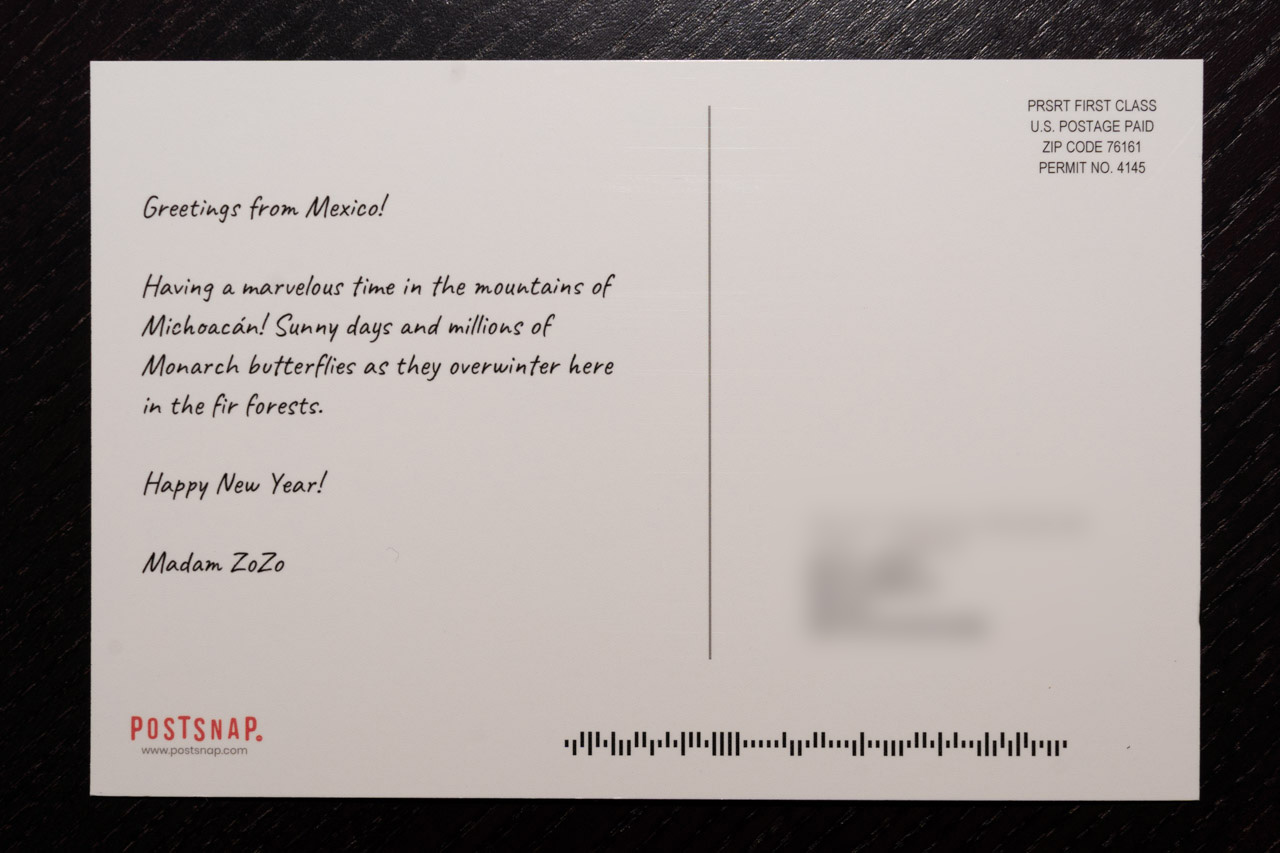Who doesn’t like receiving a postcard?! In this day and age it is so rare to even get “real” mail among all the bills and junk. It only adds to the thrill when you find one in your mailbox. As an avid postcard sender, I have put several postcard apps to the test, to see how they measure up in terms of quality, cost and convenience. Do they make a worthwhile replacement for the traditional postcard? Read on to find out.
Disclosure: I may earn compensation from the purchase of any product or service linked on this website, at no extra cost to you. I only link to products I use and love, therefore feel comfortable recommending.
Are postcards still a thing?
You might be wondering “are postcards even still a thing?” Yes. I mean, kind of. There are some old -school folks out there like myself, who still send postcards. I would absolutely encourage you to send a few and see the joyful response that you get.
I find them particularly good for older relatives who are not on social media or email savvy. They are also terrific for kids. Think about it… do younger Millenials and Gen Z even know what a postcard is? Have they even experienced what it’s like to get a letter in the mail? I send most of my postcards to young family members, godchildren and my friends’ kids. Some of them are enthused enough to even write back—how cool is that!?
Bright Idea!
Why not send postcards to yourself?! That’s right. As I wrote in this post about DIY souvenirs and documenting travel memories, sending yourself a letter or postcard every few days of your trip is a great way to create an illustrated travel journal. Just collect up the postcards when you get home and slip them into a scrapbook, or bind them with a ring in chronological order to create a diary of your adventure.
Why use a postcard app?
I try to send a few postcards from every destination I visit; honestly, sometimes it’s a real hassle. There are destinations where it’s difficult to find a place to buy a postcard. When you do find some, they are often poorly printed, cheesy cards that look like they were designed in the 1980s. Add to that…
Finding a post office that’s open;
Wondering how much a postcard stamp costs;
Getting them written (my handwriting has gone to the dogs);
Formatting an international address correctly;
Sending them before you leave the country so they have that precious international postmark on them.
Hmph! There has to be a better way, right? Well, there is…
Enter postcard apps
There is a solution for the digital age – the postcard app. Don’t worry, you still get that physical postcard in the mail, but with a few distinct advantages. Let’s jump into some of the pros and cons of postcard apps:
Pros
Personalisation: Use your own photos for a truly unique and personalized postcard. Imagine, you can even be on your own postcard.
Postage: You know exactly how much your postcard and postage will cost in advance. No worrying about stamps or post office opening hours.
Convenience: Send them from anywhere, anytime. You could be lying in a comfy hotel bed after a long day exploring or sipping wine on the terrace of a Tuscan farmhouse and just upload a photo, write a quick message and send away.
Cons
Handwriting: Your postcard won’t be in your handwriting. In my case, this is actually a pro!
Postmark: The postmark or cancellation of the stamp that appears on your postcard will not be from your destination. Most people won’t notice but some love this little detail of getting a postcard from a foreign place.
The best postcard app of 2025
There are various apps that offer to turn you pictures into postcards and mail them on your behalf. Some like, Postcard on the Run which featured on the TV show Shark Tank, have folded in recent years. I have selected several of the most popular ones that are still active in 2025, to test. I used the absolute basic, minimum offering without any premium features or upgrades. Let’s dive into the results. If you want to know more about my process and a detailed comparison, continue reading the next section.
Best postcard app overall – Ink
Best postcard app for value – Ink
Best postcard app for simplicity – SnapShot Postcard
Best postcard app for design—Postsnap
Best postcard app for authentic, old-school postcard vibes—MyPostcard
Methodology
On a quest for the best postcard app, I’ve put several of them to the following test. I downloaded each app to my iPhone and used them to create and send two postcards to myself from each: one with a photo from my iPhone 15 and another with a photo from my DSLR (a Sony A7III).
Overall, all the apps had modern, intuitive interfaces. I didn’t read any instructions, I just let them guide me through the steps of creating my chosen card. I ordered the most basic version of each card (no premium upgrades) at their individual card rates (no multi-card savings or subscriptions). I tested features such as handwritten signatures or personalized postage stamps, that were included at this standard level of purchase. I received confirmation emails for each of my orders.
I sent the two postcards from each app in separate orders, and a couple of weeks apart, in an attempt account for variances in the postal service. Next, I documented the cards’ arrival dates and examined them for print quality and design. The individual results were as follows.
The results
Ink sincerely.com/ink – best postcard app for value for money and design
Cost: From USD2.21 for postcards within the USA. USD3 for international deliveries.
Delivery: Worldwide, shipped from the USA.
Size: 5×7-in.
Cardstock: Glossy cardstock.
Android or iOS: Both.
Other products: Personalised greeting cards and other merchandise from mugs to key chains.
Payment options: Debit/credit card, ApplePay or Paypal.
Note: Ink’s parent company, Sincerely, also own a similar app called Postagram. They create 4×6-in postcards using square format images from Facebook or your photo gallery.
Using the app
Ink has lots of nice, contemporary pre-designed templates to choose from. Select the “Any occasion” category to find plain photo postcards with layouts for up to 9 images. If you choose “Create your own” there are only single-photo design options. The standard card also offers a text box for the front of the postcard.
Ink offers a wide selection of typefaces including handwritten styles. Note, I found you need to select the typeface after writing the caption, otherwise it kept reverting to the previous selection. There is the option to hand sign your card using your finger on the screen. However, it was difficult to make it neat and legible.
The Ink postcard app includes MagicMessage, an AI tool that will help you compose your message.
Immediately after completing and paying for my postcard, I realized I had made a typo. Ink allows you to return to the order and update or cancel it. It is not clear, though, how long after completing your transaction, you can make these updates/cancellations.
The result
Both the Ink postcards took 8-days to arrive. They are significantly larger than the other cards, edging out close competitor, Postsnap, over value. However, their standard 5×7-in card measures closer to 4¾ x 6½-in.
The photo print quality is in the midrange of the apps tested—not the worst, but not the best either. The postcards have a light gloss texture on the front and a satin-finish on the rear. The backside is a very minimalist black and white, split-back layout with a postage mark. There is a discreet Ink Cards logo in the bottom lefthand corner.




Postsnap postsnap.com
Cost: From USD3.99 for postcards within the USA. More for international deliveries.
Delivery: Worldwide. Shipped from the USA and UK.
Size: 4×6-in (148×105-mm) and 8×6-in (210×148-mm) cards.
Cardstock: Glossy cardstock.
Android or iOS: Both.
Other products: Personalised greeting cards, photo books, photo prints, canvas prints and invitations.
Payment options: Mastercard or Visa debit/credit cards, ApplePay or Paypal.
Using the app
Postsnap’s app is intuitive to use. It has no upsell pop-ups for a much better experience.
Postsnap offers collage layouts of up to 6 photos along with some photo filters and basic borders. You can add text to the front of your card in various typefaces, sizes and colours. Text is set to a minimum size of 12-pt, which limits the length of your caption. I tried all the typeface options and still couldn’t get the entire message (that I used on the other postcards) onto the Postsnap card.
Postsnap does not offer a subscription service. It is pay-as-you-go or you can buy a set dollar value in credits upfront for better value price per card.
There is a duplicate option to reuse a design for a different addressee before you checkout. If you checkout and want to reuse a design from your order history, you can only change the address, not the original message.
The result
The cards arrived on the West Coast USA 7-8-days after I ordered. The postcards have a lightly glossy front and rear texture with good quality print. The rear is a simple split-back, black and white design with a modestly-sized Postsnap logo. Postsnap has upped their game since my previous reviews and it is now a real contender for number 1. They have removed some features and price is now in line with other apps.




MyPostcard mypostcard.com – best overall postcard app
Cost: From USD3.49 (roughly £3.36) for card and shipping.
Delivery: Worldwide, shipped from Germany and the USA.
Size: 4×6-in.
Cardstock: FSC-certified, glossy cardstock.
Android or iOS: Both.
Other products: Personalised greeting cards, photo prints, XXL cards, framed prints, photobooks and audio cards.
Payment options: Credit card, ApplePay or Paypal.
Using the app
MyPostcard highly recommend using photos or artwork that have a minimum resolution of one megapixel and a file size no larger than 10-Mb. They offer layouts with up to 9 photos. The edges will be slightly cropped to accommodate a white border. You can rotate the postcard layout from landscape to portrait and change the colour background. You can also add a short title or caption to the front of the card.
MyPostcard offers one san-serif and several handwritten typeface options for a more authentic postcard experience. Text size and colour are also variable.
Paid upgrades include: Suggested text for different occasions, background graphics for the rear of the postcard and additional card layout designs.
When you place your order, the premium option is auto selected for an extra $0.50 and I had to manually deselect it. You can purchase credits in $25, $35, $50 and $100 amounts. From $35 up, you save money.
You have the option of providing your email address to receive an order confirmation email. This also adds you to the MyPostcard mailing list which you can easily unsubscribe from this later. The MyPostcard app allows you to save drafts and return to past orders to use the same design again. Once you have sent your postcard, there is an option to send another. This uses the same photo design and text so you can edit and send to someone else, rather than starting over from scratch.
The result
The resulting postcards took 6- and 15-days to arrive on the West Coast of the USA. The print is of good quality, with a glossy front and matte finish on the back. However, one postcard had been cut at 5¾-inches, so the border had been lopped off at one end. MyPostcard were the only postcard that had real, adhesive postage stamps attached (rather than a printed ones) at the standard price point, giving them more of an authentic, old-school feel. The layout is a typical split-back postcard. There is a mid-sized MyPostcard logo in the bottom right.
If you want some free credit to try out MyPostcard, use the code WTVJJZ (full disclosure: I will also get credit if you use this code).




Touchnote touchnote.com
Cost: From USD3.99 (roughly €3.85) for individual card and shipping.
Delivery: Worldwide delivery from print centres in U.K., U.S. and Australia.
Size: 148 x 111-mm (5⅘ x 4⅓-in).
Cardstock: Glossy cardstock.
Android or iOS: Both.
Other products: Personalised greeting cards, gifts.
Payment options: Credit card, ApplePay or Paypal.
Using the app
Touchnote request photos of a minimum 1000 x 760-pixels and a maximum resolution of 300-dpi (which is standard for printing). You can create a layout of up to 6 photos and add a themed border.
This postcard app auto-detects the orientation of your photo and rotates the postcard from portrait to landscape automatically. I found this frustrating when using certain types of images (like the mass of butterflies), because I wanted it landscape, but the app would only make it portrait. The Touchnote app offers handwritten-style and typed font options in different colours, but the type size is set. That means if you write a decent message, there really is only one font option, as the handwritten-style typefaces take up more space. In the standard version, you can select from a small range of graphics that stand in as a postage stamp.
Premium features include sticker (graphics) for the front of the postcard, photo filters e.g. black and white, use of your own handwriting, options to use a photo as a personalized “stamp”, along with a basic map of your location. There is also an option to create a postcard without text and send it to yourself to handwrite later. You can return to your order history to use a design again in the future.
Of all the apps TouchNote is the most guilty of all the apps with regard to popups trying to upsell you on subscriptions and other features/products. You can understand there isn’t much margin in a $3 postcard, after printing and shipping but the tactics felt deceitful. At the final purchase point, the app tries to get you to sign up for a subscription. If you select the option to just purchase this one card, it then tries to sell you credits and doesn’t make it clear that you can just cancel out of this screen by using the cross in the top right corner. You can see this misleading design reflected in some of the negative reviews by other users online. Be careful what you are clicking on and note that anything with a little crown symbol is a Premium feature.
The result
The cards themselves were some of the first to arrive, taking 6-7-days to reach the West Coast USA. Interestingly, Touchnote is the only app that prints the send date on the rear of the card. The print quality is good and the card is glossy on both sides. This is good for protecting the card in the mail, but having a glossy back does give it a less genuine postcard feel. The text is large and easy to read.
TThe rear design is a clean split-back layout. There is a Touchnote logo and QR code in the bottom left corner. The QR code encourages recipients to send a card back. If it is their first time using Touchnote, they get the return card for free, by signing up to an account.




Snapshot Postcard snapshotpostcard.com
Cost: USD3.29/1 credit for US destinations and 2 credits for delivery addresses outside the US.
Delivery: Worldwide, shipped from the USA.
Size: 4×6-in (6×9-in also available).
Cardstock: Glossy cardstock.
Android or iOS: Both.
Other products: Snapshot now has a website that allows you to send postcards too. It doesn’t have all the features of the app yet, but if you prefer to work on a bigger screen, this is a great option. Payment options: Debit/credit card, ApplePay or Paypal.
Payment options: Debit/credit card, ApplePay or Paypal.
Using the app
SnapShot is the most no-frills and simple to use of the apps. They recommend using photos with a minimum dimension of 1600×1200-pixels. They offer simple 1-4-photo layouts in landscape or portrait, with various creative borders that you can add. There is also an option to add a short caption to the front of the card. SnapShot offer a few typeface choices and there is a return address section.
The app also offers to let you recycle the design and customized for another recipient, rather than starting over each time. This is a super time-saver if you are sending multiple postcards. You can also return to your order history and reuse a card design later on with SnapShot.
There are no premium, pay-to-play, features. No pop-ups or upsells. Using the app is a very streamlined experience, ideal for those who don’t want any fluff.
My SnapShot postcards arrived on the West Coast USA 7-8-days after ordering. Right upfront, this is the worst postcard from a visual perspective. You can see it in the branding – their logo will make your eyes bleed. They need to employ a graphic designer – STAT!
The result
The quality of the photo print was by far the worst of all those reviewed—it was blurry like I had used a low resolution image. The rear has a pastel yellow background with purple and orange details and a medium sized SnapShot Postcard logo.




Postando Postcard & Puzzle App en.postando.de
Cost: USD (roughly €3.85).
Delivery: Worldwide. Shipped from Germany.
Size and format: 4×6-in (148 x 105-mm) and 5×7-in (176 x 125-mm).
Cardstock: Glossy 350g/m² cardstock.
Android or iOS: Both.
Other products: Personalised puzzles.
Payment options: Credit card, ApplePay or Paypal.
Using the app
Postando offer up to a 6-photo collage layout for their postcards and recommend a minimum 1-Megapixel size image. You can add creative border graphics and a short caption to the front. This postcard app offers the ability to add a hand-drawn signature and customized photo to use where the stamp would usually be on the rear. The app has a very small selection of options for typeface, size and colour of text.
There is a QR code for the recipient to scan and confirm receipt (which it explains on the card). However, it requires the person to download the Postando app to scan the code.
A feature unique to Postando is the ability to upload a video which will be digitally attached to the postcard via another QR code. However, again the recipient needs to scan the QR code from within the app on their phone to view the video.
Postando allows you to add another, different postcard to your order before checking out.
The result
The first Postando test postcard arrived after 16-days, the second took 21-days. The postcard that did arrive had good photo print quality, with a glossy front and matte rear. The rear shows just the essentials for postage and the aforementioned QR codes, along with my personalized photo “stamp” printed in colour. There was no obvious Postando branding, but a medium sized myclimate neutral logo.




Tips for using a postcard app
- Don’t use emojis and emoticons, they don’t always print as expected.
- Use only standard English characters in address section. Almost none of the apps printed the diaeresis (two dots over the e in Zoë) correctly.
- Consider sending a larger postcard with bigger text in a simple san-serif typeface if you are sending to older adults or sight-impaired individuals.
- If you’re using apps with pop-ups, ensure your read everything before clicking ahead. You do not have to sign up to a subscription with any of these apps and can pay-as-you-go.
- Some apps allow you to schedule a delivery date, but delivery is not completely within the app maker’s control. The postal service will have the greatest bearing on how long a card take to arrive. If delivery time is important to you, look for an app that prints and sends closest to your recipient’s location. E.g. If you’re sending to Australia, only Touchnote has a local print centre there. Whereas, if you’re recipient is in Europe or the U.S.A, you have plenty of options.
- These apps are all free to download, you only pay when you send a card. Feel free to download a few and play around with them to find the features you love.
- As a general rule, the postcards printed on glossy or satin finish cardstock, front and rear, sustained less damage in the post. Those with a matte back, such as Postando, were the most damaged.
Whichever postcard app you choose, your family and friends are almost guaranteed to be delighted when they receive your personalised, old-school mail. I also wrote a fun post on the history of travel postcards–you can find it here.
Peace, love & inspiring travel,
Madam ZoZo


3 comments
Very useful app lists…. thanks
Hi,
Your site looks great, and you have obviously put a of work into your research, but when I started to download your recommended postcard app, mypostcard.com, I did a check on the recent reviews, and it sounds really awful.
It’s a because it sounded really good.
I’m reluctant to use virtual postcards again without great reviews because I tried sending them to Australia from South America eight rays ago, and only some of them arrived.
I don’t know how old your comparison OSS, but do you have a current recommendation?
Cheers
Hi Chris,
Thanks for your question. I have just started my 2025 review and I’m waiting for the latest sampling of postcards to arrive. It will be another month before my review is fully up to date.
If prompt delivery time is the most important factor for you, and you generally send postcards to Australia, maybe try the Touchnote app instead. They are the only one of the reviewed apps that actually have a print facility in Australia, which speeds up local delivery. All the others print and send from Europe and North America which takes longer.
Hope this helps!
Zoë aka Madam ZoZo